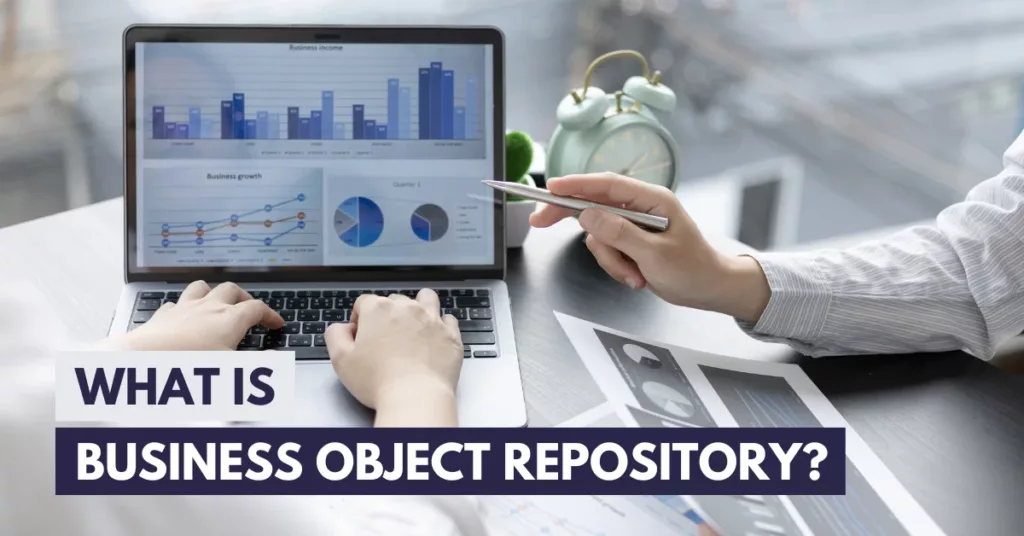In today’s world, businesses are finding technical solutions to get ahead of their competitors. The one thing that is crucial in a business is its management. In businesses, there is a high chance that you might have come across the term business object repository.
However, many people are still confused as to what it implies. Don’t worry; we will take you through it step by step and help you grasp this concept in a better way.
Technical answer to business object management. A BOR is an app that offers a summary of all the business objects in an organization, including their connections and constraints.
A BOR’s objective is to assist developers in their everyday jobs by delivering all relevant information. We believe this information is insufficient to comprehend this word thoroughly, so let us go into more depth for your convenience.
What Is a Business Object Repository?
The software-building pattern that allows for the centralized storage and access of business items. It is a piece of software that reflects a real-world corporation, such as a client, product, or order. So it is the most important element that is essential to manage a business safely.
It also allows you to centrally maintain and store business objects so that they can be reused across multiple portions of a project. This tool performs multiple functions and is the solution to many business difficulties.
Brief Overview of the Benefits It Offers
we will move on to the benefits it offers. There are several advantages it provides for your business, some of which are given below:
1. Improves Maintainability of Application
Having a single location for keeping and handling business objects might make altering those objects simpler. This may assist in streamlining the process of maintaining an application as time passes. You can save time here and invest it in more vital things that need to be done.
2. Less Effort
When business objects are kept centrally, they can be recycled in other parts of the program without needing to be rebuilt repeatedly. This can save a lot of time and work, especially for huge applications.
As a result, you will need to exert less effort to complete tasks, and the files will be easier to locate. So it’s a win-win situation for you.
3. Improve Performance
By caching business objects in memory, you can improve performance. This enables business objects to be reused rather than needing to be obtained from a business objects repository database every time they are required. In the long run, it can boost your productivity and performance.
4. Code Reuse
A BOR might motivate developers to reuse old code instead of writing new code. This may result in less costly development and higher code quality. It also allows engineers to focus on other important aspects of the business.
5. Reduces The Complexity
Developers can better grasp the links among business assets by putting them in a centralized location. This can make developing and maintaining an application easier. As a result, the overall process requires less work and complexity.
Drawbacks
Every tool has its advantages and disadvantages. Now, let us focus on the drawbacks it brings with it.
1. Dependence on Repository
The program may be unable to work if the repository is unavailable. This can be a particular issue with distributed systems because the repository may be situated on a separate machine from the application.
In case of any mishap, you can face a hurdle as your system is dependent on the tool. So make sure you have a plan in place to deal with this issue.
2. Difficult In Debugging an Application
Debugging can be difficult since business items are not easily available from the debugger. This is because the business objects are kept in the repository, and the debugger lacks immediate control over it. It can slow down your process and can be inconvenient if you are pressed for time.
3. Increase Complexity
Having a centralized store for business items can complicate an application. This intricacy can make developing and maintaining the application more challenging. So make sure that before going down this path, you should consult your developers on what their viewpoint is.
How Can You Implement a Business Object Repository?
A BOR can be implemented in a variety of ways, like using a database, a language for object-oriented programming, or a web-based service. The individual requirements of your application will determine the best technique to carry out a BOR.
If you decide to utilize a database to build a BOR, you must select the best database management system for your purposes. There are numerous types of DBMSs offered. You must choose one that is suitable for your application. After you’ve decided on a DBMS, you’ll need to create the structure of the database for your BOR.
If you opt to use an object-oriented programming language to carry out a BOR, be sure it allows the use of object-oriented programming. A wide range of computer languages supports object-oriented programming. Again, you must select one that is suitable for your program. After you have decided on a language, you’ll need to create a class system for your BOR.
Because the process of developing a BOR might be complicated, it is critical to carefully analyze the requirements of your application.
4 Best Practices When Using This Tool
There are some best practices you need to keep in mind when using a business object repository.
1. Define Your Boundaries
It is critical to precisely identify the repository boundaries while constructing a BOR. This will aid in avoiding duplication of work and improving code reuse. Defining a boundary will take you a long way, so proceed with caution.
2. Keep the Repository Up to Date
It is also critical to keep the repository up to date. This ensures that the repository is always current and accurate. It will assist you in making judgments that are in line with your business.
3. Consistent Naming
When naming business objects, adopt a uniform naming convention. This will make finding and reusing things in the repository simpler. You will be able to do the tasks swiftly and timely with this approach.
4. Test BOR Before Production
This will help you to pinpoint any problems before the launch and give you an overall idea about what you are dealing with. This step is necessary as it will set the path for the future, so take this step seriously so you don’t have to worry about future problems.
Final Words
A business tool is necessary for the developers and the businesses to grow and adopt a consistent approach. People may face some issues in the beginning, but with time, you will get an idea about how things work. We have discussed it in detail, so head over and read it.
Frequently Asked Questions (FAQs)
Q: Why is it necessary to document the objects in the business repository?
A: This step is crucial as it will give the developers an idea about their objectives and how to utilize them. It will save time, and they will be able to locate them quickly in case of any problem.
Q: What can cause overheard in the BOR?
A: Managing business items in a centralized repository might increase development time. This expense can stymie growth and raise the cost of creating an app.
Q: Is it necessary to go for an application that fits with your system?
A: Yes, it is crucial to go for an application that complements your system; otherwise, it can cause problems. You won’t be able to streamline and manage your tasks efficiently. So it is important that you pay attention to it.
How to Raise Money Anonymously



